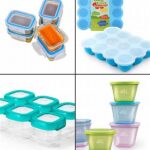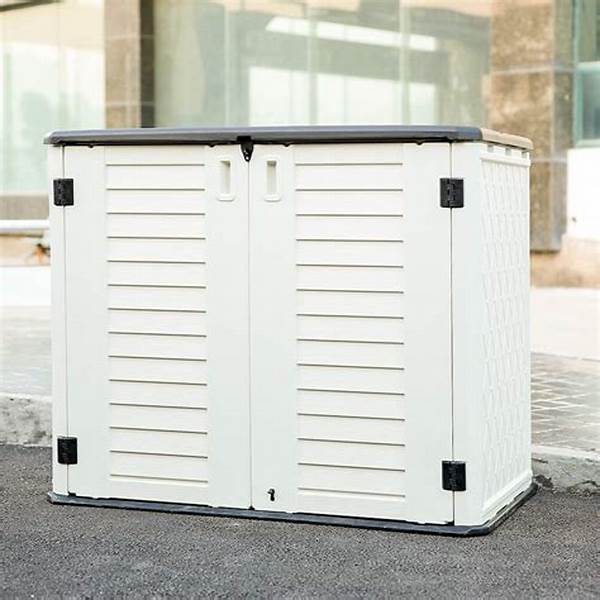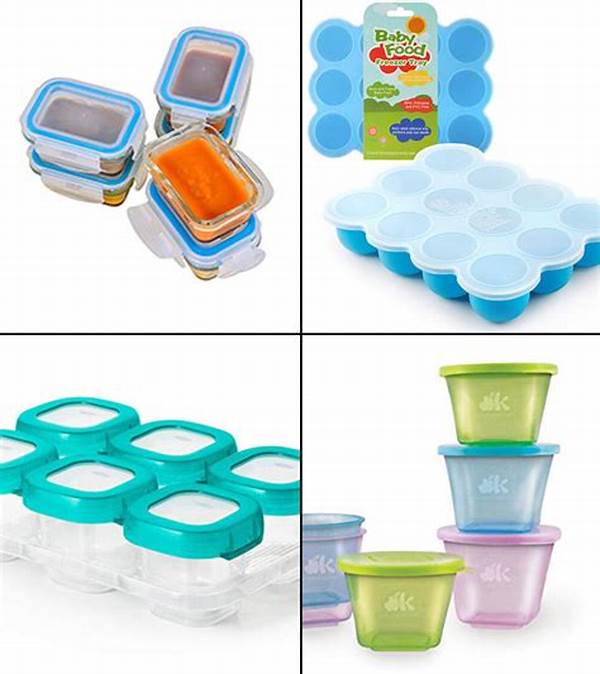- Enhancing Efficiency with Weather-Resistant Coatings
- Description of Weather-Resistant Coatings for Outdoor Mobile Bins
- examples of Weather-Resistant Coatings for Outdoor Mobile Bins
- Discussion on Weather-Resistant Coatings for Outdoor Mobile Bins
- The Technology Behind Weather-Resistant Coatings: Innovations and Applications
- Key Considerations for Weather-Resistant Coatings for Outdoor Mobile Bins
- Description of the Importance of Weather-Resistant Coatings
In the realm of outdoor management, mobile bins are indispensable heroes. They stand as unsung custodians, dutifully containing waste through sun, rain, hail, and snow. However, like any reliable aide, they wear with time, especially when exposed to the harsh variances of weather. Enter weather-resistant coatings for outdoor mobile bins—a solution that is gradually becoming a must-have for any savvy municipality or business. This protective coating is not just a layer but a shield, fortifying mobile bins against the ravages of nature and extending their lifespan. Imagine this: extending the life of outdoor bins by several years while also cutting down on replacement costs. Your budget, as well as the environment, will thank you!
Read More : Food Storage Containers Stack Neatly In Small Kitchen Cupboards
The journey to understanding the necessity of weather-resistant coatings is more thrilling than it appears. Several studies highlight their benefits, demonstrating a significant decrease in deterioration rates. Weathering, stubborn stains, and microbial growth—common foes of outdoor bins—are kept at bay, ensuring that the mobile bins remain as spry as the day they were first deployed. This impressive performance inevitably instills a sense of relief among city managers, business owners, and homeowners alike. Crucially, opting for weather-resistant coatings aligns businesses and municipalities with eco-friendly practices, a testament to sustainability commitments that resonate well with today’s environmentally-conscious society.
Enhancing Efficiency with Weather-Resistant Coatings
Weather-resistant coatings for outdoor mobile bins are no longer a luxury but a necessity for those who envision long-term cost-efficiency. As we delve deeper into urban and rural waste management, the benefits multiply. By protecting the bins, you enhance the overall efficiency of waste management operations. After all, an intact bin doesn’t just serve better but also conveys a strong image of responsibility and care. Furthermore, these coatings lend an aesthetic charm, ensuring the bins look as good as new even after years in service.
—
Description of Weather-Resistant Coatings for Outdoor Mobile Bins
Outdoor mobile bins are continually tested by nature’s elements. To maintain their function and appearance, weather-resistant coatings are applied, forming an invisible but powerful barrier. This barrier protects against ultraviolet rays, rain, and pollutants that gradually degrade the surface. In the busy marketplaces of urban areas or the serene expanses of suburban environments, these coatings provide assurance that outdoor mobile bins will remain reliable and presentable.
Beyond sheer protection, these coatings embody an economically sound choice. When bins last longer, it directly results in reduced replacement and repair costs. Municipalities and enterprises can significantly lower their overheads by investing in weather-resistant coatings. Furthermore, the workforce’s time is conserved for more pressing tasks rather than frequent bin maintenance, leading to increased productivity.
Advantages of Weather-Resistant Coatings
Ensuring bins are safeguarded against weather extremes not only maintains their structural integrity but also plays a part in a larger environmental context. By extending the life of products, these coatings reduce waste and lower the demand for new materials, aligning with sustainable practices. Additionally, this protective measure hints at the innovation ushered in by modern materials engineering.
The development of weather-resistant coatings stems from rigorous research and testing. Scientists and engineers have collaboratively worked on formulations that balance between cost-effectiveness and superior protection. This advancement has paved the way for a range of solutions to meet various needs, making the coatings adaptable to different geographic and climatic challenges.
Comprehensive Protection
In a rapidly evolving market, such coatings witness the pressures of innovation and consumer demands. Businesses and researchers draw from customer feedback and field trials to refine these formulas, ensuring they meet real-world conditions effectively. With analytical data supporting their efficacy, weather-resistant coatings for outdoor mobile bins continue to gain traction as invaluable tools in waste management.
—
examples of Weather-Resistant Coatings for Outdoor Mobile Bins
- Polyurethane-based coatings that offer excellent UV protection.
- Epoxy coatings known for their robust water-resistance properties.
- Nano-coatings that provide a molecular shield against grime and dirt.
- Acrylic topcoats enhancing color retention for aesthetic appeal.
- Fluoropolymer coatings offering superior longevity.
- Hybrid coatings combining flexible and rigid protections.
- Thermoset plastics providing freeze-resistant layers.
- Silicone protection known for its elasticity and crack resistance.
- Graphene coatings, a cutting-edge option for strength and durability.
Discussion on Weather-Resistant Coatings for Outdoor Mobile Bins
As municipalities and companies grapple with the demands of sustainable practices, the application of weather-resistant coatings becomes an increasingly attractive option. The need to extend the life of outdoor mobile bins goes beyond mere cost savings—it’s a pivotal step towards reducing environmental impact. Aged, rusted or broken bins are not just eyesores; they can also lead to operational inefficiencies and increased safety risks.
Read More : Odor-proof Liners For Mobile Trash Containers
Thus, the integration of these protective layers has been met with affirmative responses from various stakeholders. Interviews with city officials and waste management companies reveal a consistent acknowledgment of their positive impact. They highlight not only the aesthetic benefits—maintaining a neat and professional appearance—but also the reduced frequency of bin replacements as a major financial relief. This narrative of success stories clearly illustrates how weather-resistant coatings for outdoor mobile bins can revolutionize waste management strategies. Overall, the effective use of these coatings signifies a progressive stride towards innovation and sustainability.
The Technology Behind Weather-Resistant Coatings: Innovations and Applications
The fascination surrounding weather-resistant coatings for outdoor mobile bins stems from the cutting-edge science and technology behind their development. Specialized labs and innovators are constantly revamping traditional approaches to meet the increasing demands of modern waste management infrastructures. In light of climate change, it is imperative that these coatings withstand the most unpredictable and severe weather patterns. By implementing novel compounds and testing them under strenuous conditions, manufacturers strive to redefine durability.
These coatings utilize advanced materials such as polymers and biocomposites that are engineered to toughen up against external threats. This technological evolution is accompanied by a heightened focus on eco-friendliness, prompting developers to ensure the coatings are non-toxic and environmentally safe. The market for such coatings expands as policymakers and stakeholders realize the vast potentials of improved waste management systems. Ultimately, they trust the promise of longevity and sustainability offered by weather-resistant coatings for outdoor mobile bins.
Revolutionizing Waste Management Practices
One cannot overstate the leap forward represented by these protective solutions in the realm of waste management. As governments and corporations alike opt for weather-resistant coatings, significant changes manifest in service efficiency and community aesthetics. Indeed, weather-resistant coatings for outdoor mobile bins emerge as a pivotal axis in the drive for effective resource use and environmental conservation strategies.
Thus, as we witness the accelerated implementation of these coatings, their role within the ecosystem grows ever more significant. Pioneering waste management solutions through innovative coatings represents an inspired collaboration between stakeholders and chemical engineers seeking meaningful change. It stands as a hallmark of progress within a society gradually awakening to the criticality of sustainable practices.
—
Key Considerations for Weather-Resistant Coatings for Outdoor Mobile Bins
- Determine the climate and environmental conditions where bins will be used.
- Evaluate cost versus lifetime benefits of different coating types.
- Understand the material composition of the bin for optimal coating adhesion.
- Consider the bin’s exposure to sunlight, moisture, and pollutants.
- Investigate any warranty offerings alongside coating performance guarantees.
- Explore eco-friendly and non-toxic coating options.
- Consult consumer reviews and field test results on effectiveness.
- Ensure proper application methods while adhering to safety regulations.
- Examine enhancements in durability especially with heightened UV resistance.
- Be proactive in maintenance for long-term efficiency.
Description of the Importance of Weather-Resistant Coatings
The conversation about weather-resistant coatings for outdoor mobile bins goes beyond protection—it’s a nod towards progressive urban planning and environmental stewardship. Given the durability that these coatings provide, communities enjoy less frequent disruptions in bin use due to damage or deterioration. Attentive to the demands of both rough climates and urban jungles, these coatings serve as vital instruments in fighting the wear that comes with outdoor exposure.
Pioneers in this niche continually emphasize the vast cost benefits associated with reduced bin replacement frequency. Additionally, there is notable environmental merit in minimizing resource wastage through longer-lasting products. Communities reap these rewards not only financially but also in reduced carbon footprints and enhanced public spaces. It’s this very balance of economic, social, and environmental benefits that propel the conversation about these coatings into the mainstream discourse.










